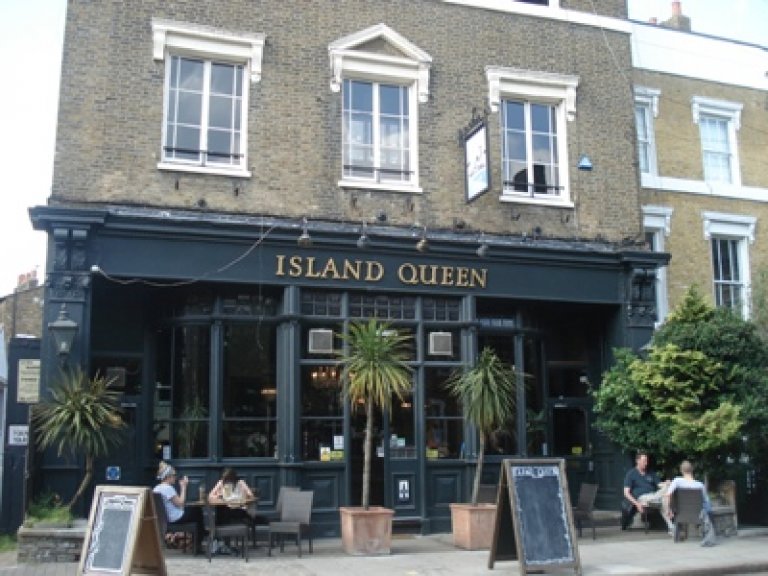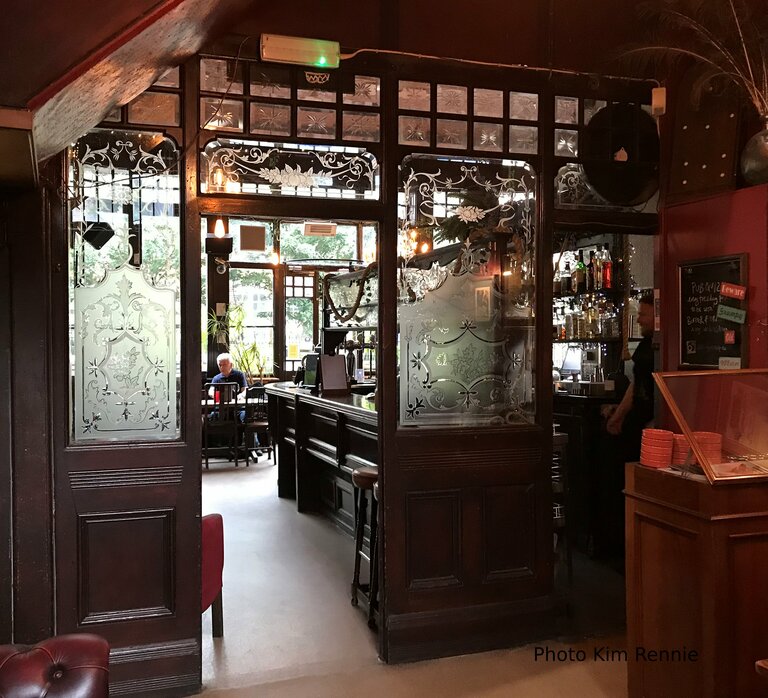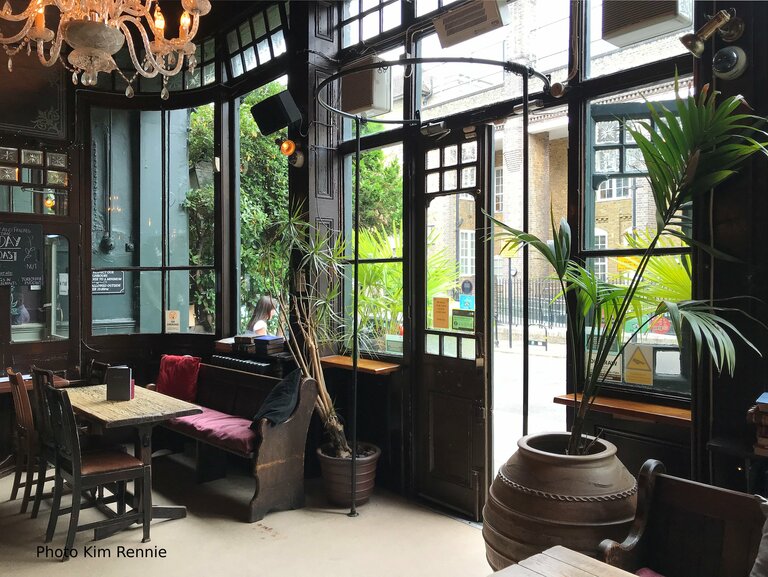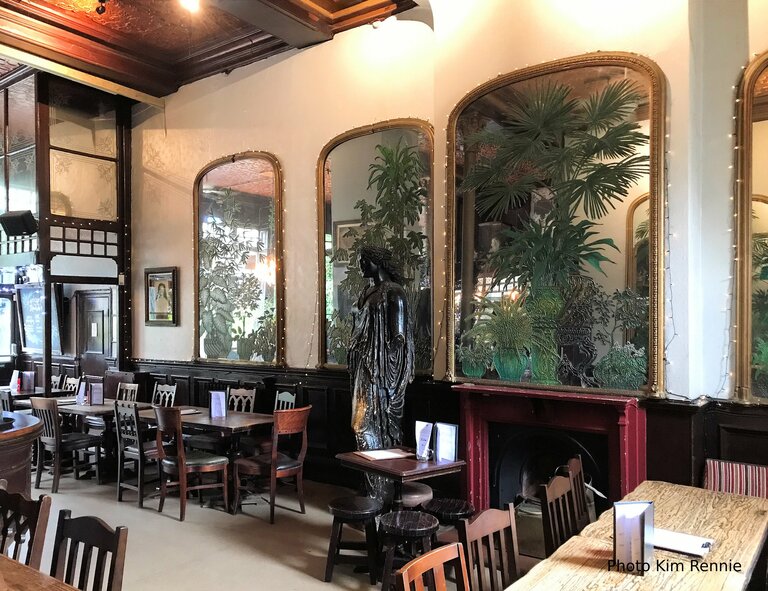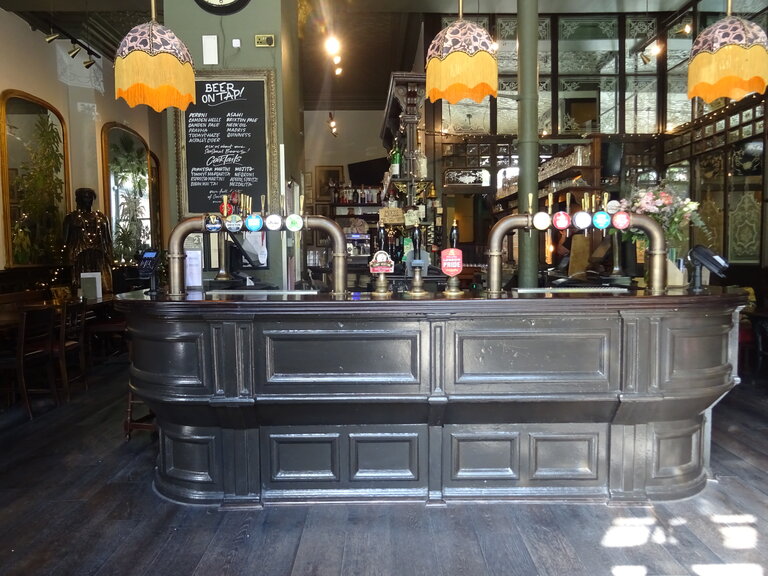Island Queen
87 Noel RoadIslington
N1 8HD
This pub is not only a grade II listed building, it is also a Three Star pub on the Campaign for Real Ale’s (CAMRA) National Inventory as having an interior of Exceptional National Historic Importance, and the description is as follows: "The Island Queen still retains many delightful internal features from the golden age of London pub building and internal design, with perhaps the most arresting being the glazed screenwork.
The Island Queen, built in 1851, rises proudly above the adjacent terraces in this smart part of Islington. It was altered internally in 1889 and 1897 and, although various partitions around the central servery have been removed, much remains from that time.
The ground-floor frontage is a timber and glass screen and behind it is an extraordinarily high bar area. A disused door on the left hand side announces “Saloon Bar” in etched glass - unfortunately, the corridor it led to has been opened up, although the high level etched glazing survives. Historic survivals within include the impressive two tier bar counter, the stillion in the centre of the servery, two cast-iron columns with Corinthian capitals and a full-height timber and glass screen forming a (now doorless) room to the rear right. On the right hand counter is a lengthy two bay pot rack of considerable age which has a very pretty etched glass frontage. There is a further glazed screen on the right creating a corridor which leads to a staircase to the first floor. Impressive etched and cut glass is signed ‘R Morris & Son, 239 Kennington Road. SE’, a firm who provided their wares to many a London pub in the late-Victorian years. Other features of note are the Lincrusta ceiling and pretty mosaic flooring in front of the left and right-hand entrances. At the rear on the left is a late 19th century fireplace with a round-arched grate (the old mirrors in this area were installed in 1979). Throughout the pub, the dado panelling survives. Tragically, most of the original window glass has been lost to clear replacements, but the attractively patterned top lights remain."
The listing description is as follows: "Public House with accommodation over. 1851, interior altered c.1889 and 1897. Stock brick facade with rendered sill band to front, cornice to front and right-hand side and rendered ground-floor side wall. Roof not seen. Rectangular plan with entrance to right-hand side. Dark timber and glass frontage to public house, with curved glass flanks, central door (now blocked) and side door, with narrow mullions between treated as columns, and with small toplights under frieze, which has dentilled cornice. Heavy panels to timber dado. The composition is framed by pilasters with Corinthian capitals, and by set-back door with half glazing to side. The upper floors make a strong composition, three windows wide, the first floor with margin light glazing and central pediment; all windows have flat projecting lintels supported on console brackets. Sashes to second floor, again with projecting lintels supported on console brackets. The rear windows have sashes under gauged brick heads, those to first floor with margin lights. Projecting rear ablution block there by 1897 (not shown on plan of 1873).
The pub interior of the late nineteenth century survives well. Entered now from the right-hand side, there is an original central island bar, with small bar back and optic stand, whose cradle is later. Cast-iron columns with Corinthian capitals and lincrusta ceiling. A good collection of c.1900 mirrors in the back bar, which retains a late nineteenth-century fireplace with round-arched grate . At the entrance some partitioning survives, with some renewed glass. A fragment of the frieze moulding survives behind inserted food counter, and dado panelling survives around the principal bar space. To rear a pool room has early twentieth-century panelling. To side, stairs with late nineteenth-century dado panelling lead to upper floors, which have not been inspected. Below, a series of cellars, originally also a kitchen and pot room, extend under the roadway.
Included as a good surviving example of a mid-nineteenth century public house, which makes a handsome contribution to a street that includes many listed terraces, with a good late nineteenth-century front and central bar, and other features of interest now becoming extremely rare."
The WhatPub link is here: WhatPub/Island Queen
The Pub Heritage Group link is here: PHG/Island Queen
The Island Queen featured on the Evening Crawl of Islington in December 2006.
